List of empires
This is an alphabetical list of empires. The table may be resorted by other columns if your browser supports this function.
Empires and dynasties[]
This list is incomplete; you can help by . (December 2017) |
| Empire | Modern state | Capital | From | To | Duration
(years) |
Note | First leader | Last leader | Flag | |
|---|---|---|---|---|---|---|---|---|---|---|
| Abbasid Caliphate | Baghdad, Raqqa, Kufa, Samarra, Anbar | 750 | 1258 | 508 | Successor of the Umayyad Caliphate and Third of the Four Caliphates. | As-Saffah | Al-Musta'sim |  | ||
| Aceh Sultanate | Kutaraja | 1496 | 1903 | 407 | Ali Mughayat Syah | Alauddin Muhammad Da'ud Syah II | ||||
| Achaemenid Empire | Pasargadae, Ecbatana, Persepolis, Susa, Babylon | 550 BC | 330 BC | 220 | The first Persian empire, and the fourth largest List of largest empires (after Xiongnu Empire, Han Dynasty and the First Turkic Khaganate) in classical antiquity time period, founded by Cyrus the Great. | Cyrus the Great | Darius III |  |
||
| Afsharid Dynasty | Mashhad | 1736 | 1796 | 60 | Founded by Nader Shah, at its peak expanded Persia as far west as Baghdad, and as far east as Delhi. | Nader Shah | Shahrokh Afshar |  | ||
| Aghlabid Emirate | Kairouan | 800 | 909 | 109 | The Aghlabids were an Arab dynasty that ruled Ifriqiya and southern Italy as a vassal of the abbasids, though they were de facto independent from the caliphate. | Ibrahim I ibn al-Aghlab | Ziyadat Allah III |  | ||
| Ahom Dynasty | Charaideo, Garhgaon, Rangpur (Ahom capital), Jorhat | 1228 | 1838 | 610 | It is well known for maintaining its sovereignty for nearly 600 years and successfully resisting Mughal expansion in Northeast India. | Sukaphaa | Purandar Singha |  | ||
| Akkadian Empire | Akkad | 2334 BC | 2154 BC | 180 | The Oldest Empire in the World. | Sargon of Akkad | Shu-turul | |||
| Aksumite Empire | Axum | 150 | 940 | 790 | Succeeded by the Ethiopian Empire. | Za Haqala | Dil Na'od | |||
| Akwamu | Akwamufie, Nyanoase | 1505 | 1867 | 362 | ||||||
| Alaouite dynasty | Fes, Meknes | 1631 | 2021 | 281 | Sharifian Empire of Morocco. Later became a protectorate of France. Current ruling dynasty of the Kingdom of Morocco | Sharif ibn Ali | Mohammad VI |   | ||
| Almohad Caliphate | Marrakech, Seville | 1121 | 1269 | 148 | Berber Empire | Ibn Tumart | Abu al-Ula al-Wathiq Idris |  | ||
| Almoravid dynasty | Azougui (1040–1058), Aghmat (1058–1062), Marrakech (1062–1147) | 1040 | 1147 | 107 | Berber Empire | Abdallah ibn Yasin | Ishaq ibn Ali |  | ||
| Angevin Empire | No official capital. Court was generally held at Angers and Chinon | 1154 | 1242 | 88 | Henry II | Henry III |  | |||
| Aq Qoyunlu | Bayburt, Palu, Ergani, Diyarbakır, Tabriz | 1378 | 1503 | 125 | ||||||
| Armenian Empire | Tigranakert | 190 BC | 428 | 618 | Tigranes the Great took the title King of Kings. |  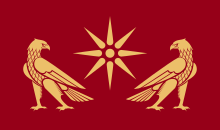 | ||||
| Assyria | Assur | 2500 BC | 911 BC | 1589 | Tudiya | Ashur-dan II | ||||
| Neo-Assyrian Empire | Assur, Dur-Sharrukin, Nimrud, Nineveh, Harran | 911 BC | 609 BC | 302 | Adad-nirari II | Ashur-uballit II | ||||
| Ashanti Empire | Kumasi | 1670 | 1896 | 226 | Osei Tutu | Prempeh I | 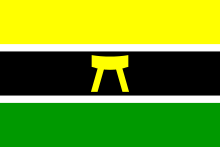 | |||
| Austrian Empire | Vienna | 1804 | 1867 | 63 | Preceded by the Holy Roman Empire. | Francis II | Franz Joseph I |  | ||
| Austria-Hungary | Vienna, Budapest | 1867 | 1918 | 51 | Often referred to as the "Austro-Hungarian Empire". Formed out of the Austrian Empire as a result of the Austro-Hungarian Compromise of 1867. Officially a real union of the rump Austrian Empire (Cisleithania) and the Lands of the Crown of Saint Stephen/Transleithania. Ruler was therefore referred to as Kaiser und König ("Emperor-King", literally "Emperor and King"). | Franz Joseph I | Charles IV and I |  | ||
| Ayyubid dynasty | Cairo, Damascus, Hama | 1171 | 1260 | 89 | Founded by Saladin, See also List of Muslim states and dynasties. | Saladin | Al-Ashraf[disambiguation needed] |    | ||
| Aztec Empire | Tenochtitlan | 1428 | 1521 | 93 | The capital of Mexico, Mexico City, is built on the ruins of Tenochtitlan. | Itzcoatl | Cuauhtemoc |  | ||
| Aulikara Empire | Mandsaur, | 528 | 550 | 22 | Empire disintegrated after Shiladitya, the second king's death. | Yashodharman | Shiladitya (ruler of Malwa) | |||
| Babylonian Empire | Babylon | 1900 BC | 1600 BC | 300 | See also Neo-Babylonian Empire. | |||||
| Balhae | Sanggyeong | 698 | 926 | 228 | Successor of Goguryeo. | |||||
| Banten Sultanate | Old Banten, Serang | 1526 | 1813 | 287 | Maulana Hasanuddin of Banten | |||||
| Sultanate of Banjar | Banjarmasin, Pemakuan, Tambangan, Martapura, Kayu Tangi | 1520 | 1905 | 385 | ||||||
| Bamana Empire | Ségou | 1712 | 1861 | 149 | Also known as the Bambara Empire or Ségou Empire | |||||
| Belgian colonial empire | Brussels | 1901 | 1962 | 61 | Overseas possessions were referred to as "the colonies" rather than an empire. | Leopold II of Belgium |  | |||
| Benin Empire | Benin City | 1440 | 1897 | 457 | ||||||
| Kadamba dynasty | Banavasi | 345 | 540 | 195 | The Kadambas (345–540 CE) were an ancient royal family of Karnataka, India, that ruled northern Karnataka and the Konkan from Banavasi in present-day Uttara Kannada district. The kingdom was founded by Mayurasharma in 345 CE. | |||||
| Bornu Empire | Ngazargamu | 1387 | 1893 | 506 | The continuation of the Kanem Empire. | |||||
| Empire of Brazil | Rio de Janeiro | 1822 | 1889 | 67 | Established after Pedro I of Brazil declared the independence of Brazil from Portugal. | Pedro I of Brazil | Pedro II of Brazil |  | ||
| Britannic Empire | Londinium | 286 | 296 | 10 | Was a break-away state of the Roman Empire. See also the Carausian Revolt. | |||||
| British Empire | London | 1603 | Either surviving until present or ended in 1997 | 394 | The largest empire in world history. Precursor to the modern Commonwealth of Nations. Remnants of the empire include the British Overseas Territories and Crown Dependencies. Her Majesty Queen Elizabeth II remains as sovereign. For many the handover of Hong Kong to the People's Republic of China on 1 July 1997 marked the end of the British Empire.[1] | James I | Elizabeth II | 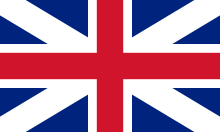  | ||
| British Raj | Calcutta (1858–1912), New Delhi (1912–1947) | 1858 | 1947 | 89 | Governed by the Crown and part of the British Empire. Queen Victoria was proclaimed Empress of India in 1876. | Queen Victoria | George VI |  | ||
| Bruneian Empire | Not specified, possibly Kota Batu | 1368 | 1888 | 520 | Lasted until it became a British protectorate in 1888. | Muhammad Shah of Brunei | Hashim Jalilul Alam Aqamaddin |  | ||
| First Bulgarian Empire | Pliska (680–893), Preslav (893–972), Skopie (972–992), Ohrid (992–1018) | 680 | 1018 | 338 | Founded by Khan Asparukh. Under Tsar Simeon I became the first powerful Slavic Empire. Falls to the Byzantine Empire under Emperor Basil II. | Asparuh of Bulgaria | Ivan Vladislav of Bulgaria | |||
| Second Bulgarian Empire | Veliko Turnovo (1185-1396) | 1185 | 1422 | 237 | Successor of the First Bulgarian Empire. Under the Tsars Kaloyan and Ivan Asen II became the most powerful state in the Balkans. | Peter II of Bulgaria | Ivan Sratsimir of Bulgaria |   | ||
| Duchy of Burgundy | Dijon | 1364 | 1477 | 113 | Theorically vassal of France. Ruled a very large territory from Alps to North Sea. | Phillip the Bold | Charles the Bold |   | ||
| Buyid dynasty | Shiraz | 934 | 1055 | 121 | Imad al-Dawla | Abu Mansur Fulad Sutun | ||||
| Byzantine Empire | Constantinople | 330 | 1453 | 1123 | The eastern half of the Roman Empire. Term conventionally used since the 19th century to describe the Greek-speaking Roman Empire during the Middle Ages. | Constantine I | Constantine XI |  | ||
| Caliphate of Córdoba | Córdoba | 756 | 1031 | 275 | See also Caliphate. | Abd al-Rahman III | ||||
| Cao Wei | Luoyang | 220 | 265 | 45 | See also Three Kingdoms. | Cao Pi | ||||
| Carthaginian Empire | Carthage | 814 BC | 146 BC | 668 | Best known as the Roman Republic’s rival in the Punic Wars, Carthage was a North African commercial hub that flourished for over 600 years. | Dido |  | |||
| Cebu Rajahnate | Cebu City | 1279 | 1565 | 286 | An Indianized state founded by a minor Chola prince. | |||||
| Chagatai Khanate | Transoxania | Almaliq, Qarshi | 1225 | 1687 | 462 | Division of the Mongol Empire. | ||||
| Chalukya dynasty | Badami | 543 | 753 | 210 | ||||||
| Chauhan dynasty | Delhi | 800 | 1200 | 400 | ||||||
| Chavín Empire | 900 BC | 200 BC | 700 | |||||||
| Chenla | Isanapura | 550 | 802 | 252 | Succeeded by the Khmer Empire. | |||||
| Chera dynasty | Vanchi Muthur, Karur, Kodungallur, Kollam. | 400 BC | 1729 | 2129 | A Tamil (Later, Malayalam) dynasty which includes Early Cheras, Medieval Cheras, Kodungallur Cheras and Venadu Cheras. | |||||
| Chola empire | Uraiyur, Pazhaiyaarai, Thanjavur, Gangaikonda Cholapuram | 400 BC | 1540 | 1940 | A Tamil dynasty which includes Early Cholas, Medieval Cholas and Later Cholas till the reign of Virasekhara Chola (opponent of Nagama Nayak). Ruled parts of India, Sri lanka, Malaysia, Singapore, Indonesia, Burma Maldives and Philippines. | Vijayalaya Chola | ||||
| Comanche Empire | N/A | 1750 | 1850 | 100 | A region of the southwest United States and Northern Mexico which was dominated by highly mobile Comanche warrior units known as racherías. | |||||
| Commonwealth of England | London | 1649 | 1660 | 11 | Short puritan and republican period in Britain. The Cromwell's army conquered Ireland and Jamaica. | Oliver Cromwell | Richard Cromwell | 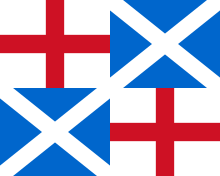 | ||
| Congo Free State | Vivi then Boma | 1885 | 1908 | 23 | Private kingdom of Leopold II. Annexed by Belgium after the revelation of committed atrocities in rubber plantations. |  | ||||
| Crimean Khanate | Crimea | Bakhchysarai | 1441 | 1783 | 342 | One of the last Turkic kingdoms, annexed by Russia. | Hacı I Giray | Şahin Giray |  | |
| Dacian Empire | Sarmizegetusa Regia | 168 BC | 106 | 274 | Reached its territorial expansion under King Burebista (82 BC – 44 BC) and also had the title of King of Kings. | Rubobostes | Decebalus | |||
| Danish colonial empire | Copenhagen | 1536 | 1953 | 417 | See also Danish overseas colonies. | Christian III of Denmark | Frederick IX of Denmark | 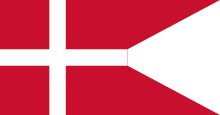 | ||
| Delhi Sultanate | Delhi | 1206 | 1527 | 321 | Qutb al-Din Aibak | Ibrahim Lodi |  | |||
| Demak Sultanate | Bintara | 1475 | 1568 | 93 | Raden Patah | Arya Penangsang | ||||
| Durrani Empire | Kandahar, Kabul | 1747 | 1823 | 76 | Ahmad Shah Durrani | Shah Shujah Durrani |  | |||
| Dutch Empire | Amsterdam | 1568 | 1975 | 407 | See also Dutch East India Company and Dutch West India Company. |  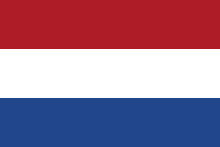 | ||||
| Egyptian Empire | Various, including Thebes, Akhetaten, Pi-Ramesses, Memphis | 1550 BC | 1077 BC | 473 | See also 18th Dynasty, 19th Dynasty & 20th Dynasty. | Ahmose I | Ramesses XI | |||
| Elamite Empire | Susa | 1210 BC | 1100 BC | ~110 Elam#Elamite Empire (About Elamite Empire) |  Elam Haltamti | |||||
| Exarchate of Africa | Carthage | 585 | 698 | 113 | The Exarchate of Africa was a division of the Byzantine Empire centered around Carthage, Tunisia, that encompassed its possessions on the Western Mediterranean (excluding Italy and Sicily). And it was ruled by an exarch. | Gennadius | John the Patrician | |||
| Abbasynia | Addis Ababa | 1137 | 1974 | 837 | Yekuno Amlak | Haile Selassie |    | |||
| Fatimid Caliphate | Mahdia (909–969), Cairo (969–1171) | 909 | 1171 | 262 | See also Caliphate. | Abdallah al-Mahdi Billah | al-Adid |  | ||
| First French Empire | Paris | 1804 | 1815 | 11 | Established after the French Revolution | Napoleon | Napoleon |  | ||
| Second French Empire | Paris | 1852 | 1870 | 18 | Established after the French loss of the Franco-Prussian War | Napoleon III | Napoleon III | |||
| French colonial empire | Paris | 1534 | Either surviving until present or ended in 1980 | 487 as of 2021 or 446 as of 1980 | Some consider the Empire ending with the end of French presence in Vanuatu (see New Hebrides) France still maintains overseas possessions in the form of Overseas France. | Francis I of France | Emmanuel Macron | 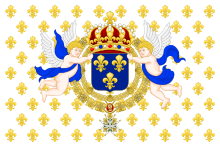    | ||
| Frankish Empire | Various, including Soissons, Paris, Reims, Orléans, Metz & Aachen | 800 | 843 | 43 | Succeeded by Middle Francia, East Francia, and West Francia. | Clovis I | Louis the Pious | |||
| Funan | Vyadhapura | 50 | 550 | 500 | Succeeded by the Chenla. | |||||
| Gallic Empire | Rhineland-Palatinate | Colonia Agrippina | 260 | 274 | 14 | Broke off from the Roman Empire during the Crisis of the Third Century. | ||||
| Gaza Empire | Southern Africa | Not specified | 1824 | 1895 | 71 | |||||
| Republic of Genoa | Genoa | 1096 | 1797 | 701 | Major commercial power during the Late Middle Ages. Established colonies across the Mediterranean and Black Sea. |  | ||||
| Georgian Empire | Kutaisi, Tbilisi | 1008 | 1490 | 482 | Established in 1008 as an unified kingdom. Georgian kings took title "King of Kings" and ruled over large territory consisting of Georgian, Armenian and Muslim areas, as well as numerous client states. Officially dissolved at 1490. | Bagrat III of Georgia | George VIII of Georgia |   | ||
| German Empire | Berlin | 1871 | 1918 | 47 | See also German colonial empire/Also known as "The Second Reich". Otto Von Bismark as Prime minister of Prussia, uniter of Germany and then Chancellor of Germany(1871-1890) likely had far more political pull than Wilhelm I. | Wilhelm I | Wilhelm II | 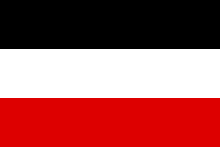 | ||
| Ghana Empire | Koumbi Saleh | 300 | 1240 | 940 | The empire became known in Europe and Arabia as the "Ghana Empire" by the title of its ruler (meaning "Warrior King"). Also known as Wagadou. | |||||
| Ghaznavid dynasty | Ghazni later Lahore | 963 | 1187 | 224 | Sabuktigin | Khusrau Malik | ||||
| Ghurid dynasty | Firuzkuh | 1148 | 1215 | 67 | Amir Suri | Ala al-Din Ali | ||||
| Goguryeo | Korea[2] | Jolbon, Gungnae City, Pyongyang | 37 BC | 668 | 705 | Predecessor of Balhae and Goryeo. | ||||
| Goryeo | Korea | Gaegyeong, Ganghwa | 918 | 1392 | 474 | Successor of Goguryeo. Unification of the Korean Peninsula. State maintained as an empire between 918 and 1274. | Taejo of Goryeo | Gongyang of Goryeo |  | |
| Gorkha Empire | 1600 | 1850 | 250 | Unification of Greater Nepal. State maintained as an empire between 1600 and 1840. | ||||||
| Göktürk Khaganate | Inner Asia | Ötüken | 552 | 747 | 195 | 552–603 First empire, 603–658 Double empire, 658–681 Dark age, 681–747 Second empire. | ||||
| Golden Horde | Central Asia | Sarai Batu | 1240 | 1502 | 262 | Successor state of the Mongol Empire. | Jochi | Sheikh Ahmed |  | |
| Sultanate of Gowa | Sungguminasa | 1300 | 1945 | 645 | ||||||
| Empire of Great Fulo | Tekrur | 1514 | 1776 | 262 | ||||||
| Great Moravian Empire | 833 | 900 | 67 | The word "Moravia" did not refer only to present-day Moravia. | Mojmir I of Moravia | Mojmir II of Moravia | ||||
| Seljuq Empire | Aral Sea, Asia Minor, Persia | Nishapur and later on Rey | 1037 | 1194 | 157 | Turkish empire, predecessor of the Sultanate of Rum. | ||||
| Gurjara-Pratihara dynasty | Kannauj | 600 | 1136 | 536 | Founded by great king of Gujjars. | |||||
| Gupta Empire | Pataliputra | 320 | 550 | 230 | Founded by Sri Gupta. | |||||
| Hafsid Kingdom | Tunis | 1228 | 1574 | 346 | The Hafsids were a sunni muslim dynasty of Berber descent who ruled Ifriqiya for over 300 years. | Abu Zakariya Yahya | Abu Abdallah Muhammad VI ibn al-Hasan |   | ||
| Han dynasty | Chang'an, Luoyang, Xuchang | 206 BC | 220 | 426 | Founded by Liu Bang the High Ancestor. | Emperor Gaozu of Han | Emperor Xian of Han | |||
| Hanseatic League | North and Baltic Sea | Lübeck | 1356 | 1648 | 292 | Alliance of German and Baltic merchant city-states. | ||||
| Empire of Harsha | Kannauj | 606 | 647 | 41 | Founded by Harshavardhana; collapsed after his death. | |||||
| Hephthalite Empire | Kabul | 420 | 567 | 147 | ||||||
| Hittite Empire | Anatolia | Hattusa | 1460 BC | 1180 BC | 280 | See also Syro-Hittite states. | ||||
| Holy Roman Empire | Central Europe | Not specified | 962 | 1806 | 844 | Referred to simply as the Roman Empire (not to be confused with the actual Roman Empire) before 1157, when it became the Holy Empire. The Holy Roman Empire is attested from 1254. Was officially known as the Holy Roman Empire of the German Nation after 1512, although this designation had fallen out of use again by the 18th century. See Holy Roman Empire § Name. | Otto I the Great | Francis II |   | |
| Hotak dynasty | Isfahan | 1709 | 1738 | 29 | Mirwais Hotak | Hussain Hotak |  | |||
| Hoysala Empire | Belur, Halebidu | 1026 | 1343 | 317 | ||||||
| Hunnic Empire | Eurasia | Not specified | 370 | 469 | 99 | |||||
| Husainid dynasty | Tunis | 1705 | 1957 | 252 | The Husainids were a dynasty that ruled the Beylik of Tunis which was a largely autonomous governorate of the Ottoman Empire. | Al-Husayn I ibn Ali | Muhammad VIII al-Amin |   | ||
| Idrisid dynasty | Fes | 788 | 974 | 186 | Founders of the first Moroccan state. | Idris I | Al-Hasan ibn Kannun |  | ||
| Ilkhanate | Maragheh, Tabriz, Soltaniyeh | 1256 | 1335 | 79 | Successor state of the Mongol Empire. | Hulagu Khan | Abu Sa'id Bahadur Khan |  | ||
| Kingdom of Israel (united monarchy) | Gibeah (1030–1010 BC), Mahanaim (1010–1008), Hebron (1008–1003), Jerusalem (1003–930) | 1047 BC | 930 BC | 117 | Split into Kingdom of Israel and Kingdom of Judah | Saul | Rehoboam | |||
| Kingdom of Judah (united monarchy) | Jerusalem | 1050 BC | 586 BC | 464 | Considers the Start of Saul's reign, through the dual kingdoms of the Kingdom of Israel (Samaria) and the Kingdom of Judah, until the Babylonian conquest of Judah. | |||||
| Inca Empire (Tawantinsuyo) | Andes ( |
Cusco | 1438 | 1533 | 95 | The largest empire in pre-Columbian America. | Pachacuti | Waskar (legitimately) |  | |
| Italian Empire | Rome | 1885 | 1943 | 58 | See also Italian imperialism under Fascism. | Umberto I | Victor Emmanuel III | 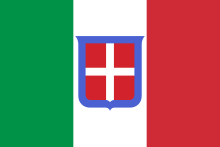 | ||
| Empire of Japan | Tokyo | 1868 | 1947 | 79 | Emperor's government took control of the country in 1868. Regional hegemony in East Asia ended in 1945. The new constitution of 1947 formally abolished the empire.[3] | Meiji | Shōwa (Hirohito) | 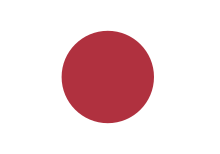  | ||
| Jin dynasty (266–420) | Luoyang (265–311), Chang'an (312–316), Jiankang (317–420) | 266 | 420 | 154 | Subdivided into two dynasties. Western Jìn dynasty (266–316), Eastern Jìn dynasty (317–420). | |||||
| Jin dynasty (1115–1234) | Huining, Zhongdu, Kaifeng | 1115 | 1234 | 119 | Also known as the Jurchens, were the ancestors of the Manchus who established the Qing dynasty. | |||||
| Johor Empire | Muar, Johor Lama | 1528 | 1855 | 327 | Alauddin Riayat Shah II | Ali Iskandar | ||||
| Jolof Empire | Linguère | 1350 | 1549 | 199 | Also known as the Wollof Empire. Succeeded by the Kingdom of Jolof (1549–1875). | |||||
| Joseon | Korea | Hanseong | 1392 | 1897 | 505 | Taejo | Gojong |   | ||
| Kaabu Empire | West Africa | Kansala | 1537 | 1867 | 330 | Also written Gabu, Ngabou, and N’Gabu'. | ||||
| Kachari kingdom[4] | Dimapur, Maibang and Khaspur | 835 | 1832 | 997 | The first of the Kachari kings claimed to rule in the town of Dimapur in Assam in the early ninth century, although he was probably little more than a powerful chieftain. The Kacharis belonged to the Dimasa Bodo Kachari group and called themselves descendents of Ghatotkacha, the son of the Pandava Prince Bhima. They also appear to have had links to their cousins, the Mlechha kings. They ruled from their capital at Hidimbapur (Dimapur). | |||||
| Kalmar Union | Scandinavia | Roskilde then Copenhagen | 1397 | 1523 | 126 | Personal union of Denmark, Pomerania, Norway and Sweden. | Margaret I | Christian II |  | |
| Kanem Empire | Njimi | 700 | 1387 | 687 | Sef | Omar I |  | |||
| Kanva dynasty | Pataliputra, Vidisha | 75 BC | 30 BC | 45 | Replaced the Shunga Empire. | |||||
| Kara-Khanid Khanate | Turkistan | Kashgar | 840 | 1212 | 372 | First Turkic dynasty to embrace Islam. | ||||
| Kazakh Khanate | Turkistan | 1465 | 1847 | 382 | Kerei Khan | Kenesary Khan | ||||
| Khazar Khaganate | Pontic steppe, North Caucasus | Balanjar, later Atil | 700 | 1000 | 300 | Founded by Western Turks, the members of the royal family embraced Judaism. | ||||
| Khmer Empire | Hariharalaya (802–889), Angkor (889–1431) | 802 | 1431 | 629 | Succeeded from the kingdom of Chenla. | Jayavarman II | Ponhea Yat |  | ||
| Khilji dynasty | Kabul, Delhi | 1290 | 1320 | 30 | ||||||
| Khwarazmian dynasty | Urgench | 1077 | 1221 | 144 | Anushtegin Gharchai | Qutuz | ||||
| Kievan Rus' | Novgorod, Kiev | 879 | 1240 | 361 | ||||||
| Konbaung dynasty | Mandalay | 1752 | 1885 | 133 | ||||||
| Kong Empire | West Africa | Kong | 1710 | 1898 | 188 | Also known as the Wattara Empire or Ouattara Empire. | ||||
| Korean Empire | Korean Peninsula | Hanseong | 1897 | 1910 | 13 | Was the last ruling Korean dynasties. | [[Gojong of Korea | Sunjong of Korea |  | |
| Kushan Empire | Various, including Mathura, Peshawar, Begram, Taxila | 30 | 345 | 315 | Kujula Kadphises | Kipunada | ||||
| Kingdom of Kush | Napata, Meroe | 1070 BC | 350 | 1420 | ||||||
| Lakota people | Great Plains | Great winter camps | 1700 | 1877 | 177 | Main Native power in North America until Black Hills annexation by United States. | ||||
| Latin Empire | Thrace, Asia Minor | Constantinople | 1204 | 1261 | 57 | See also Latinokratia. | ||||
| Later Lê dynasty | Đông Kinh | 1428 | 1789 | 361 | Lê Lợi | Lê Chiêu Thống | ||||
| Liao dynasty | Shangjing | 915 | 1125 | 210 | ||||||
| Lodi Sultanate | Delhi | 1451 | 1526 | 75 | ||||||
| Macedonian Empire | Aegae, Pella, Babylon | 334 BC | 323 BC | 11 | Founded by Alexander the Great. | |||||
| Madurai Nayak dynasty | Madurai,
Tiruchirappalli |
1529 | 1736 | 207 | Branched out from the Vijayanagara Empire by Viswanatha Nayak. | |||||
| Majapahit Empire | Majapahit, Wilwatikta | 1293 | 1527 | 234 | Successor of the Singhasari; founded by Raden Wijaya. | Raden Wijaya | Prabu Udara |  | ||
| Mali Empire | West Africa | Niani, later Ka-ba | 1235 | 1610 | 375 | A Mandinka empire founded by Sundiata Keita. | ||||
| Malacca Empire | Malacca | 1400 | 1511 | 111 | Iskandar Shah | Mahmud Shah | ||||
| Mamluk Sultanate | Cairo | 1250 | 1517 | 267 | See also Islamic Empire. | Al-Mustansir (Cairo) | Tuman bay II |  | ||
| Manchukuo | Hsinking | 1932 | 1945 | 13 | Created as a puppet state of the Japanese Empire, with Emperor Puyi (the last emperor of the Qing dynasty) installed as nominal regent and emperor. | Puyi | Puyi | 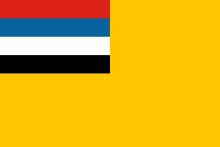 | ||
| Maratha Empire | Raigad, later Satara | 1674 | 1818 | 144 | Founded by Shivaji Maharaj, also known as the Maratha Confederacy. | |||||
| Marinid dynasty | Fes | 1244 | 1465 | 221 | Abd al-Haqq I | Abd al-Haqq II |  | |||
| Massina Empire | West Africa | Hamdullahi | 1820 | 1862 | 42 | |||||
| Mataram Sultanate | Kotagede, Karta, Plered, Kartosuro | 1587 | 1755 | 168 | The largest sultanate in Java. Production of Javanese Djong stopped during the era of this sultanate. | |||||
| Mauretania | Volubilis, Caesarea | 225 BC | 44 | 269 | . | Baga (king) | Ptolemy of Mauretania | |||
| Mauryan Empire | Pataliputra | 321 BC | 185 BC | 136 | Founded by Chandragupta Maurya. The Mauryan Empire became the largest ever Indian empire under Ashoka. | |||||
| Median Empire | Ecbatana | 625 BC | 549 BC | 76 | First Iranian empire, Founded by Deioces. | |||||
| Mlechchha dynasty | Tezpur | 650 | 900 | 250 | Founded by Salasthamba(Kachari King). The Mlechchha dynasty replaced the Varman dynasty. | |||||
| First Mexican Empire | Mexico City | 1821 | 1823 | 2 | Agustín I of Mexico | Agustín I of Mexico |  | |||
| Second Mexican Empire | Mexico City | 1864 | 1867 | 3 | Succeeded the First Mexican Empire which was short lived (1821–1823). See also Mexican Imperial Orders. | Maximillian I of Mexico | Maximillian I of Mexico |  | ||
| Ming dynasty | Nanjing (1368–1421), Beijing (1421–1644) | 1368 | 1644 | 276 | Founded by Zhu Yuanzhang the Great Marshal. | Hongwu Emperor | Chongzhen Emperor | |||
| Mitanni Empire | Washukanni | 1500 BC | 1300 BC | 200 | ||||||
| Mongol Empire | Karakorum | 1206 | 1368 | 162 | Split into four empires (Yuan dynasty, Ilkhanate, Chagatai Khanate and Golden Horde). Largest contiguous land empire. | Genghis Khan | Toghon Temur | |||
| Mughal Empire | Indian Subcontinent | Agra, Delhi | 1526 | 1758 | 232 | Founded by Babur. "Mughal" is a Persian word for the Mongols. | Babur | Bahadur Shah Zafar |  | |
| Nanda Empire | Indian Subcontinent | Pataliputra | 450 BC | 350 BC | 100 | |||||
| Neo-Babylonian Empire | Babylon | 626 BC | 539 BC | 87 | See also Babylonia. | Nabopolassar | Nabonidus |  | ||
| Nguyễn dynasty | Phú Xuân | 1802 | 1945 | 143 | Was the last ruling Vietnamese dynasty Would later be a puppet state of the Third French Republic. | Gia Long | Bảo Đại |  | ||
| North Sea Empire | Ribe | 1016 | 1035 | 19 | As one historian put it: "When the 11th century began its fourth decade, Canute was, with the single exception of the Emperor, the most imposing ruler in Latin Christendom. ... [H]e was lord of four important realms and the overlord of other kingdoms. Though technically Canute was counted among the kings, his position among his fellow-monarchs was truly imperial. Apparently he held in his hands the destinies of two great regions: the British Isles and the Scandinavian peninsulas. His fleet all but controlled two important seas, the North and the Baltic. He had built an Empire."[5] | Sweyn Forkbeard | Cnut the Great |  | ||
| Empire of Nicaea | Bithynia | Nicaea | 1204 | 1261 | 57 | Successor state of the Byzantine Empire. | ||||
| Northern Yuan dynasty | Shangdu, Yingchang, Karakorum | 1368 | 1635 | 267 | Created after the expulsion of the Yuan dynasty from China proper in 1368. | Toghon Temür | Ejei Khan | |||
| Numidia | Cirta | 202 BC | 40 BC | 162 | First Berber Kingdom in North Africa, founded by Massinissa in 202 BC. | Massinissa | Juba II | |||
| Omani Empire | Muscat | 1698 | 1856 | 158 | See Oman. | |||||
| Ottoman Empire | Söğüt, Bursa, Edirne, İstanbul | 1299 | 1922 | 623 | Predecessor of the Republic of Turkey. | Osman I | Mehmed VI |  | ||
| Oyo Empire | Southwestern Nigeria | Oyo-Ile | 1400 | 1905 | 505 | |||||
| Pagan Empire | Bagan | 849 | 1297 | 448 | ||||||
| Pahlavi dynasty | Tehran | 1925 | 1979 | 54 | The last Imperial dynasty of the Persian Empire. | Reza Shah | Mohammad Reza Pahlavi |  | ||
| Pala Empire | Pataliputra | 750 | 1174 | 424 | ||||||
| Palmyrene Empire | Palmyra | 270 | 273 | 3 | Broke off from the Roman Empire during the Crisis of the Third Century. | |||||
| Pandyan dynasty | Madurai, Korkai, Tenkasi, Tirunelveli | 500 BC | 1759[6] | 2259 | A Tamil dynasty which includes Early Pandyas (possible sunken continent, Kumari Kandam), First Empire, Second Empire and Later Pandyas of Tenkasi and Tirunelveli. |  | ||||
| Parthian Empire | Various, including Asaak, Hecatompylos, Ecbatana, Ctesiphon, Nisa | 247 BC | 224 | 471 | Third Iranian empire, Founded by Arsaces I. | |||||
| Pontic Empire | Pontus, (Greece) | Amaseia, Sinope | 120 BC | 47 BC | 73 | Mithridates VI had the title: King of Kings. | ||||
| Portuguese Empire | Lisbon, Rio de Janeiro (1815–1821) | 1415 | 1999 | 584 | It was one of the first global empires and one of the longest lived of the colonial Western European empires. See also United Kingdom of Portugal, Brazil and the Algarves. | João I | António Guterres |    | ||
| Kingdom of Prussia | Berlin | 1701 | 1871 | 170 | Was a great power during the 18th century. Unificated Germany after the Franco-Prussian War against France. | Frederick I of Prussia | Wilhelm I |  | ||
| Ptolemaic Empire | Alexandria | 305 BC | 30 BC | 275 | See also Diadochi. | |||||
| Qajar dynasty[citation needed] | Tehran | 1794 | 1925 | 131 | ||||||
| Qara Qoyunlu | Erciş, Mosul, Tabriz | 1378 | 1468 | 90 | ||||||
| Qin dynasty | Xianyang | 221 BC | 206 BC | 15 | First dynasty of the imperial period. | Qin Shi Huang | ||||
| Qing dynasty | Shenyang, Beijing | 1644 | 1912 | 268 | Last dynasty of the imperial period. | Hong Taiji | Puyi | 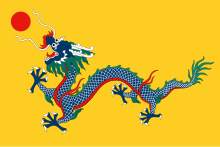 | ||
| Ramnad Sethupathis | Ramanathapuram | 1590 | 1979 | 389 | ||||||
| Rashidun Caliphate | Medina, Kufa | 632 | 661 | 29 | Predecessor of the Umayyad Caliphate, See also Islamic Empire. | Abu Bakr | Hassan |  | ||
| Rashtrakuta dynasty | Manyakheta | 753 | 982 | 229 | ||||||
| Roman Empire | Rome, Milan, Ravenna | 27 BC | 395 | 422 | Together with the Roman Kingdom, the Roman Republic, direct Roman states lasted from 753 BC until 1453 AD, 1229 years. Formed from the Roman Republic as a consequence of the dictatorship and political assassination of Julius Caesar. The Empire was divided into the Western Roman Empire and the Eastern Roman/Byzantine Empire in 395 AD, although the latter is usually considered to have become a sort of distinct civilization. However, given that this half of the Empire fell only in 1453 AD, this extends the whole year count to 2206 years. | Octavianus Augustus | Theodosius I (undivided) Romulus Augustus (Western) |
 | ||
| Rouran Khaganate | Inner China | Not specified | 330 | 555 | 225 | |||||
| Rozwi Empire | Southern Africa | Danangombe | 1660 | 1866 | 206 | |||||
| Rustamid dynasty | Tahert | 777 | 909 | ʿAbdu r-Rahman ibn Bahram ibn Rūstam | Yaqzan ibn Muhammad Abil-Yaqzan | |||||
| Russian Empire (Romanov) | Saint Petersburg | 1721 | 1917 | 196 | Successor state of the Tsardom of Russia. | Peter The Great | Nicolas II |    | ||
| Saadi dynasty | Marrakech | 1554 | 1659 | 105 | Sharifian Empire of Morocco who destroyed the Songhai Empire. | Abu Abdallah al-Qaim | Ahmad al-Abbas |  | ||
| Safavid dynasty | Tabriz, Qazvin, Esfahan | 1501 | 1736 | 235 | Ismail I | Abbas III | 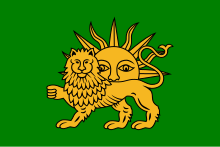 | |||
| Saffarid dynasty | Zaranj | 867 | 1002 | 135 | ||||||
| Sassanid dynasty | Ctesiphon | 224 | 651 | 427 | Fourth Iranian Empire. |  | ||||
| Satavahana dynasty | Amaravathi village, Guntur district Dharanikota | 230 BC | 220 | 450 | An Andhra dynasty which preceded the Vengi dynasty of Andhra. | |||||
| Samanid Empire | Balkh, Bukhara | 819 | 999 | 180 | ||||||
| Saudeleur dynasty | Nan Madol | 1100 | 1628 | 528 | A semi-mythic foreign dynasty ruling from the Pohnpei Island of modern Micronesia. | |||||
| Duchy of Savoy | Chambéry then Turin | 1416 | 1713 | 297 | Theorically member state of Holy Roman Empire then vassal of France. Ruled a territory from Romandy to Nice. | Amadeus VIII, Duke of Savoy | Charles Albert of Sardinia |  | ||
| Seleucid Empire | Seleucia, Antioch | 312 BC | 63 BC | 249 | See also Diadochi. | Seleucus I Nicator | Philip II Philoromaeus | |||
| Serbian Empire | Skopje, Prizren | 1346 | 1371 | 25 | Founded by Dušan the Mighty, fell into feudal disarray after his death. | Stefan Dusan | Stefan Uros V |  | ||
| Shu Han | Chengdu | 221 | 263 | 42 | See also Three Kingdoms. | Liu Bei | Liu Shan | |||
| Siam Empire | Bangkok | 1782 | 1932 | 150 | Rama I | Rama VII | 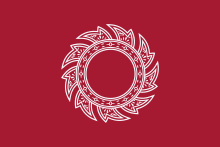 | |||
| Sultanate of Siak Sri Indrapura | Buantan, Mempura, Senapelan Pekanbaru, Siak Sri Indrapura | 1722 | 1945 | 223 | ||||||
| Sikh Empire | Punjab region | Lahore | 1733 | 1849 | 116 | Preceded the Punjab Province of British India in the Indian subcontinent. | Ranjit Singh | Duleep Singh |  | |
| Singhasari | Java | Singosari | 1222 | 1292 | 70 | Launched the Pamalayu Expedition which ended Malay control in the Straits of Malacca. | Ken Arok | Kertanegara | ||
| Sokoto Caliphate | West Africa | Sokoto (1804–1850), (1851–1902), Gudu (1804), Birnin Konni (1850, 1903) | 1804 | 1903 | 99 | |||||
| Song dynasty | Bianjing (960–1127), Lin'an (1127–1279) | 960 | 1279 | 319 | Founded by Zhao Kuangyin. | Emperor Taizu of Song | ||||
| Songhai Empire | West Africa | Gao | 1340 | 1591 | 251 | Former vassal of the Mali Empire which became one of the largest African empires in history. | ||||
| Spanish Empire | Spain | Madrid | 1479 | 1975 | 496 | Was founded with Columbus’s funding, by the Catholic monarchs of Castille and Aragon, to his first voyage (that would land in America). | Ferdinand II of Aragon & Isabella I | Francisco Franco |     | |
| Srivijaya Empire | Indonesian Archipelago | Palembang, Mataram | 683 | 1293 | 610 | It was a powerful ancient thalassocratic Malay empire based on the island of Sumatra, Indonesia, then based on Mataram (Medang Kingdom) under Sailendra's dynasty. | ||||
| Sui dynasty | Chang'an | 581 | 618 | 37 | Emperor Yang of Sui | |||||
| Wadiyar dynasty (Kingdom of Mysore) | Mysuru, Karnataka | Yaduraya Wodeyar | 1399 | 1950 | 551 | |||||
| Shunga Empire | Pataliputra, Vidisa | 185 BC | 73 BC | 112 | Magadha dynasty that controlled North-central and Eastern India. | |||||
| Swedish Empire | Stockholm | 1611 | 1721 | 110 | See also Swedish overseas colonies. | Gustavus Adolphus of Sweden | Frederick I of Sweden | 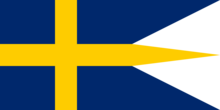 | ||
| Tahirid dynasty | Nishapur | 821 | 873 | 52 | ||||||
| Tang dynasty | Chang'an (618–904), Luoyang (904–907) | 618 | 907 | 289 | Founded By Li Yuan (aka. Emperor Gaozu of Tang). | |||||
| Thanjavur Nayak dynasty | South India | Thanjavur | 1532 | 1673 | 141 | Founded by Sevappa Nayak. | ||||
| Tây Sơn dynasty | Phú Xuân | 1778 | 1802 | 24 | Nguyễn Nhạc | Nguyễn Quang Toản |  | |||
| Sultanate of Ternate | Ternate | 1258 | 1914 | 657 | ||||||
| Empire of Thessalonica | Epirus, Kingdom of Thessalonica | Thessaloniki | 1224 | 1246 | 22 | Evolved from the Despotate of Epirus. | ||||
| Third Reich | Berlin, Hamburg | 1933 | 1945 | 12 | Nazi Germany signed a treaty (Tripartite Pact) with the Japanese and Italian Empire. Only lasted at its height from winter 1941-42 when the Soviet Union started counterattacks. | Adolf Hitler | Karl Donitz (Signed surrender terms on May 7, 1945)[7] |  | ||
| Tibetan Empire | Tibet | Lhasa | 755 | 842 | 87 | Expansion of Tibet started ~626. The death of the last leader lead to a civil war which destroyed the empire.[8] | Trisong Dretsen | Tsenpo Langadarma | ||
| Tondo dynasty | Tondo | 900 | 1587 | 687 | ||||||
| Sultanate of Tidore | Tidore | 1274 | 1967 | 693 | ||||||
| Timurid Empire | Samarkand, Herat | 1370 | 1526 | 156 | Persianized form of the Mongolian word kürügän, Turko-Mongol Empire. | Timur | Badi' al-Zaman Mirza |  | ||
| Tlemcen | Tlemcen | 1235 | 1556 | 321 | the Zayyanids is a dynasty that ruled modern day north western Algeria, althought for much of their history they were either a vassal of the Hafsids or the Marinids | Yaghmurasen Ibn Zyan | Al Hassan ibn Abdallah |   | ||
| Empire of Trebizond | Pontus | Trebizond | 1204 | 1461 | 257 | Successor state of the Byzantine Empire and a client state of the Kingdom of Georgia. | Alexios I of Trebizond | David of Trebizond |  | |
| Toltec Empire | Mesoamerica | Tollan-Xicocotitlan | 496 | 1122 | 626 | Ce Técpatl Mixcoatl or Huémac (Unsure/potentially mythical) | Topiltzin or Huemac (Accounts differ) | |||
| Toungoo dynasty | Toungoo | Myanmar | 1510 | 1752 | 242 | The largest empire ever formed in South East Asia’s history. | ||||
| Toucouleur Empire | West Africa | Ségou | 1848 | 1893 | 45 | |||||
| Tu'i Tonga Empire | Mu'a | 950 | 1865 | 915 | See History of Tonga. | |||||
| Turgesh Khaganate | Turkistan | Balasagun | 699 | 766 | 67 | Founded as a successor of West Turkish empire. | ||||
| Umayyad Caliphate | Damascus, Córdoba (capital-in-exile) | 661 | 750 | 89 | Successor of the Rashidun Caliphate, See also Caliphate. | Muawiya I | Marwan II |  | ||
| Uyunid Emirate | Arabian | Al-Hasa, Qatif | 1076 | 1253 | 177 | The Uyunids were a Sunni Arab dynasty that ruled Bahrain for 163 years, from the 11th to the 13th centuries. | ||||
| Uyghur Khaganate | Central Asia | Ordubaliq | 742 | 848 | 106 | 742–848 Founded as a successor of Göktürk Khaganate, 848–1036 Gansu state, 856–1209 Turfan state. | ||||
| Vandal Kingdom | Hippo Regius, Carthage | 435 | 534 | 99 | The Vandal Kingdom was established by the Germanic Vandal people, it ruled Africa (Roman province), Sicily, Corsica, Sardinia and other Mediterranean islands. | Gaiseric | Gelimer |  | ||
| Vijayanagara Empire | Karnataka, India | Vijayanagara | 1336 | 1646 | 310 | A Kannada kingdown, where Gold use to be traded in streets; richest kingdom in the world. | Harihara I | Sriranga III |  | |
| Republic of Venice | Venice | 697 | 1797 | 1100 | Major great power during the Middle Ages and the Early modern period. | Paolo Lucio Anafesto | Ludovico Manin | 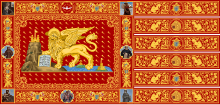 | ||
| Wari Empire | Huari/Tiwanaku | 500 | 1100 | 600 | It is a matter of conflict as to whether it was a real organized state that could be called an empire. If so, it would be considered the first empire in the Americas. | |||||
| Wassoulou Empire | West Africa | Bissandugu | 1878 | 1895 | 17 | Also known as the Mandinka Empire. | ||||
| Wattasids | Fez | 1472 | 1554 | 82 | The Wattasid dynasty was a ruling dynasty of Morocco. Like the Marinid dynasty, its rulers were of Zenata Berber descent.[2] The two families were related. | Abu Abd Allah al-Sheikh Muhammad ibn Yahya | Ali Abu Hassun |  | ||
| Western Chalukya Empire | Manyakheta, Basavakalyan | 973 | 1189 | 216 | ||||||
| Western Roman Empire | Mediolanum, Ravenna | 395 | 476 | 81 | The western half of the Roman Empire. | |||||
| Eastern Wu | Wuchang, Jianye | 229 | 280 | 51 | See also Three Kingdoms. | Sun Quan | Sun Hao | |||
| Western Xia dynasty | Xingqing | 1038 | 1227 | 189 | Also called the Tangut dynasty. | |||||
| Xin dynasty | Chang'an | 9 | 23 | 14 | Temporary usurper state of the Han Dynasty. Had only one emperor. | Wang Mang | Wang Mang | |||
| Yuan dynasty | Dadu | 1271 | 1368 | 97 | Division of the Mongol Empire. The Yuan emperors had nominal supremacy over western khanates. | Kublai Khan | Toghon Temür |  | ||
| Zand dynasty | Shiraz | 1750 | 1794 | 44 | Karim Khan Zand | Lotf Ali Khan Zand |  | |||
| Zhou dynasty | Fenghao, Wangcheng, Chengzhou | 1046 BC | 256 BC | 790 | Zenith of bronze age in China. | |||||
| Zhou dynasty (690–705) | Luoyang (Shendu) | 690 | 705 | 15 | Temporary usurper state of the Tang Dynasty ruled by the only officially recognized empress regnant in Chinese history, Wu Zetian. | Wu Zetian | Wu Zetian | |||
| Zirids | Achir, Kairouan, Mahdia | 972 | 1148 | 176 | the Zirid dynasty was a Sanhaja Berber dynasty who ruled Ifriqiya, initially starting as a vassal of the fatimids, but gradually gaining more autonomy until becoming fully independent in 1048. | Buluggin ibn Ziri | Abu'l-Hasan al-Hasan ibn Ali | |||
| Zulu Empire | South Africa | KwaBulawayo, Ulundi | 1818 | 1897 | 79 | Shaka | Dinuzulu |  | ||
| Sumer | Not specified | 4500 BC | 1900 BC | 2600 | First civilisation and predecessor to the Akkadian Empire. | Enmebaragesi | Damiq-ilishu |
Possible and informal empires[]
These governments, confederations and other entities have sometimes been informally referred to as "empires". Some did not fit the modern definition of empire (e.g. the Delian League), some were self-proclaimed by their first and often last ruler, others were short-lived attempts to turn an existing government into an empire, and there are also instances of the word "empire" being used to refer to unofficial spheres of influence which do not consider themselves empires.
| "Empire" | Origin | Capital | From | To | Duration | Note |
|---|---|---|---|---|---|---|
| American Empire | Washington, D.C. | 1776 | Present | 245 | The concept of an American Empire was first popularized during the presidency of James K. Polk who led the United States into the Mexican–American War of 1846. Since the Cold War the concept has been revived to refer to the United States' sphere of influence by its critics. | |
| Athenian Empire (Delian League) | Ancient Greece | Delos island | 478 BC | 404 BC | 74 | Also known as the Delian League. It was an association of Greek city-states. |
| Second Athenian League | Ancient Greece | Athens | 378 BC | 355 BC | 23 | |
| Central African Empire | Bangui | 1976 | 1979 | 3 | President Jean-Bédel Bokassa declared himself Emperor Bokassa I in 1976, along him proclaiming the empire as a constitutional monarchy. | |
| Emirates of the United Arab Emirates | Abu Dhabi | 1971 | Present | 48 | ||
| Empire of China | Beijing | 1915 | 1916 | 1 | It was a short-lived attempt by Yuan Shikai to reinstate the recently collapsed imperial monarchy. | |
| First Empire of Haiti | Port-au-Prince | 1804 | 1806 | 2 |
Jean-Jacques Dessalines declared himself Emperor Jacques I, starting the monarchy. | |
| Second Empire of Haiti | Port-au-Prince | 1849 | 1859 | 10 |
Faustin Soulouque declared himself Emperor Faustin I, reinstating the monarchy. | |
| Various member nations | No capital as it is a political, economic, and military alliance between the member nations.
If there were a capital it would be Brussels or Strasbourg. |
1993 | Present | 28 | The EU is a political, economic, and military alliance which adheres to certain centralized law-sets and has its own central government positions. While the EU isn't considered a single nation, it still has power for political and economic sway (amassing a combined GDP of $18.292 trillion in 2019), which it uses such as for bailing out member states in situations of bankruptcy and standing as a military unit aligned against what it considers to be threats.
The EU may be seen as a sphere of influence such as that of the United States, rather than a unit that directly controls territories. | |
| Grand Duchy of Lithuania | Vilnius | 1200 | 1569 | 369 | It was the largest state in Europe in the 15th century. | |
| Polish–Lithuanian Commonwealth | Kraków | 1569 | 1795 | 226 | It was formed by the Union of Lublin in 1569, between the Kingdom of Poland and the Grand Duchy of Lithuania. It was one of the largest and one of the most populous countries of 16th and 17th-century Europe, with some 390,000 square miles (1,000,000 km2) and a multi-ethnic population of 11 million at its peak in the early 17th century.[9][10][11][12][13][14] | |
| Roman Republic | Rome | 509 BC | 27 BC | 482 | Predecessor of the Roman Empire. Although not a monarchy, which was the norm at the time, it controlled large amounts of territory along the Mediterranean Sea. | |
| Kingdom of Romania | Bucharest | 1920 | 1944 | 24 | Following the post–World War I treaties that ratified its borders (the last one being the 1920 Treaty of Trianon), the newly-enlarged Romanian monarchy was rated by the Comintern as a multi-national imperial state that subjugated ethnic minorities.[15][16] Indeed, according to the 1930 Romanian census, just over 28% of Romania's inhabitants were not ethnic Romanians. Non-Romanians formed the majority in 14 out of Romania's 71 counties.
The issue of "Romanian imperialism" (as Romanian leading politician Iuliu Maniu put it) was further exacerbated by the 1941 creation of the Romanian Transnistria Governorate from parts of the Ukrainian SSR, under the rule of "Conducător" Ion Antonescu.[17] These new borders lasted until 1944. According to the 1941 Romanian census, 21 out of the now 73 Romanian counties were inhabited by a non-Romanian ethnic majority, including all of the 13 Transnistrian counties. Only two of these 21 new counties had a Romanian majority. | |
| Soviet Empire | Soviet Union | Moscow | 1922 | 1991 | 69 | A political term for the sphere of influence of the Soviet Union used by its critics. In 8 March 1983, Ronald Reagan declared the Soviet Union to be an "Evil Empire" |
See also[]
- List of former sovereign states
- Fictional empires
- List of former monarchies
- List of medieval great powers
- List of largest empires
- Middle Eastern empires
- Political history of the world
References[]
- ^ Friends Of The British Overseas Territories
- ^ "Koguryŏ". Encyclopædia Britannica. Retrieved 26 July 2019.
- ^ "Chronological table 5 1 December 1946 – 23 June 1947". National Diet Library. Retrieved 30 September 2010.
- ^ https://www.historyfiles.co.uk/KingListsFarEast/IndiaKacharis.htm
- ^ Larson, Laurence M (1912). Canute the Great, 995(Circ)–1035, and the Rise of Danish Imperialism During the Viking Age. Putnam.
- ^ Sethuraman, N. (1993). The Later Pandyas (1371 - 1759 AD). Tiruchirapalli: The Epigraphical Society of India.
- ^ "Germany surrenders unconditionally to the Allies at Reims".
- ^ "The Rise and Fall of the Tibetan Empire".
- ^ Davies, Norman (1996). Europe: A History. Oxford: Oxford University Press. p. 554. ISBN 978-0-19-820171-7.
Poland–Lithuania was another country which experienced its 'Golden Age' during the sixteenth and early seventeenth centuries. The realm of the last Jagiellons was absolutely the largest state in Europe.
- ^ Wandycz, Piotr Stefan (2001). The Price of Freedom: A History of East Central Europe from the Middle Ages to the Present (2nd ed.). London [u.a.]: Routledge. p. 66. ISBN 978-0-415-25491-5.
The multinational character of the Habsburg monarchy was comparable to that of the Commonwealth [...]
- ^ McKenna, Amy, ed. (2014). Estonia, Latvia, Lithuania, and Poland. The Britannica Guide to Countries of the European Union. Chicago: Britannica Educational Publishing. p. 203. ISBN 978-1-61530-991-7.
Lithuania was also a powerful empire and dominated much of eastern Europe in the 14th–16th centuries in close alignment with Poland; then, from 1569, it was part of a confederation with Poland [...]
- ^ Lozny, Ludomir (2005). "Poland". In Skutsch, Carl (ed.). Encyclopedia of the World's Minorities. 3. New York [u.a.]: Routledge. p. 963. ISBN 978-1-135-19388-1.
It was indeed an Eastern European empire, a multiethnic and multicultural state with great economic strength and strong military power, controlling most of central and eastern European politics.
- ^ Kupisz, Dariusz (2012). "The Polish-Lithuanian Army in the Reign of King Stefan Bathory (1576–1586)". In Davies, Brian L. (ed.). Warfare in Eastern Europe, 1500–1800. History of Warfare. 72. Boston: Brill. p. 63. ISBN 978-90-04-22196-3.
In terms of territorial expanse in Europe the Polish-Lithuanian state was surpassed only by Russia and the Ottoman Empire and in respect to population was behind only France, Spain, and the German Empire.
- ^ Davies, Brian L. (2011). Empire and Military Revolution in Eastern Europe: Russia's Turkish Wars in the Eighteenth Century. Continuum Studies in Military History. London [u.a.]: Continuum. p. 29. ISBN 978-1-4411-7004-0.
Poland–Lithuania had entered the seventeenth century as one of the great powers in Eastern Europe.
- ^ van de Grift, Liesbeth (2012). Securing the Communist State: The Reconstruction of Coercive Institutions in the Soviet Zone of Germany and Romania, 1944–1948. The Harvard Cold War Studies Book Series. Lanham: Lexington Books. p. 21. ISBN 978-0-7391-7178-3.
- ^ Fehér, Ferenc; Arato, Andrew, eds. (1991). Crisis and Reform in Eastern Europe. Transaction Publishers. p. 162. ISBN 978-0-88738-311-3.
- ^ Deletant, Dennis (2006). Hitler's Forgotten Ally: Ion Antonescu and his Regime, Romania 1940–1944. Springer. pp. 85, 267.
External links[]
- Pella, John & Erik Ringmar, History of International Relations Open Textbook Project, Cambridge: Open Book, forthcoming.
- Empires
- Former empires
- History-related lists